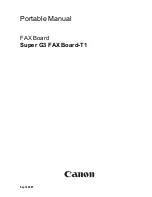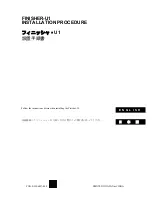
BTP-M300 Programming Manual
- 10 -
[Range]
0
≤
n
≤
255
[Notes]
Select or cancel the user-defined characters:
• When the LSB of n is 0, the user-defined characters are not used.
• When the LSB of n is 1, the user-defined characters are used.
[Default]
n = 0
[Relative]
ESC &, ESC ?
ESC & y c1 c2 [x1 d1...d(y × x1)]...[xk d1...d(y × xk)]
[Function]
Define user-defined characters
[Format]
ASCII
ESC
& y c1 c2 [x1 d1...d(y × x1)]...[xk d1...d(y × xk)]
Hex
1B
26 y c1 c2 [x1 d1...d(y × x1)]...[xk d1...d(y × xk)]
Decimal
27
38 y c1 c2 [x1 d1...d(y × x1)]...[xk d1...d(y × xk)]
[Range]
y = 2
32
≤
c1
≤
c2
≤
126
When Font A is selected: 0
≤
x
≤
12
When Font B is selected: 0
≤
x
≤
10
0
≤
d1 ... d(y × xk)
≤
255
k = c2 – c1 + 1
[Notes]
Define the user-defined ASCII characters via this command:
• y specifies the number of bytes in the vertical direction, which is fixed to 2;
• c1 specifies the ASCII beginning character code, and c2 specifies the ASCII final
character code;
• x specifies the number of dots in the horizontal direction.
• d is the data of the downloaded characters.
• The allowable character code range is from ASCII code <20>H to <7F>H (95
characters).
• Max. number of Font A and Font B which could be defined is 20 for each.
• It is possible to define multiple characters for consecutive character codes. If only one
character is defined, use c1 = c2.
• The size of user-defined character is (y × x) bytes.
• Set a corresponding bit to 1 to print a dot or 0 to not print a dot.
• The user-defined character definition is cleared when:
①
ESC ?
or
ESC @
is executed.
The power is turned off.
②
[Relative]
ESC &, ESC ?, ESC @
[Demo]
• When Font A is selected:
















































